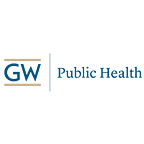Analyzing Health Workforce Needs During COVID 19 Pandemic
By Patricia (Polly) Pittman
For those of us who study and advocate for the health workforce, it is clear that this country’s ability to manage the novel coronavirus COVID-19 depends to a large degree on whether and how it protects and deploys the health workforce.
Worldwide, the health workforce is under tremendous pressure. Here in the United States, it is particularly stressed. On the one hand, we herald U.S. health workers as heroes, but on the other, we are witnessing insufficient personal protective equipment, the refusal to institute national occupational and safety standards for airborne pathogens, and the furloughing of thousands of health workers. Moreover, many small private practices that have had to postpone primary care, dental and behavioral health services are themselves at risk of economic collapse, further reducing access to care in rural and underserved communities and adding more health workers to the unemployment rolls.
The Fitzhugh Mullan Institute for Health Workforce Equity has launched three initiatives to make health workforce data and expert opinion available in real time to decision makers as they navigate this new and challenging landscape.
The first is a Hospital Workforce Deficit Estimator. We use the Institute for Health Metrics and Evaluation projections of the high, mean and low incidence of infection and hospitalizations scenarios to estimate the demand for specific health workers during this first wave of COVID-19. The model allows users to modify certain parameters, such as staffing ratios and the level of health worker attrition, as state-specific information becomes available, and to thus be able to plan for the redeployment of health personnel across professions and specialties and across sites and even states as need dictates. We find that among all five professions completed to date — respiratory therapists, intensivists, hospitalists, critical care nurses and pharmacists — there are at least two states at risk of shortages under the mean demand scenario, normal (baseline) staffing ratios, and zero attrition. As the peak of the infection curve passes in New England states, we see new states emerging as at risk of workforce deficits.
Second, we have launched a Contact Tracing Workforce Estimator to estimate the number of contract tracers at the state and county levels to clear two weeks of cases in a jurisdiction in one week of work. We include several parameters that can be modified by users to help them explore scenarios and anticipate needs. We anticipate that this tool can help policymakers determine when social distancing restrictions can be safely lifted.
The third initiative is a recorded webinar series on Emergency Health Workforce Policies to Address COVID-19, which has engaged experts and leaders from various sectors in the analysis of what policy changes are occurring at the Federal, state and local levels, and what more needs to happen quickly to respond to the needs of underserved populations.
Topics posted to date include Expanding Scope of Practice; Federal and State Preparations — Focus on 1135 Waivers; Increasing Supply by Tapping Retirees and Other Health Practitioners; Is There a Right to Not Work During COVID 19?; Mobilizing Health Professions Students; Telehealth to Support Primary Care During COVID-19; The Importance of Standards; Unique Challenges Facing the Abortion Provider Workforce; Ensuring Access to Behavioral Health; Contact Tracing to Ease Social Distancing; Social Mission of Health Professions Schools;. An Opportunity to Build the Public Health Workforce and Data Tool to Calculate Contact Tracer Workforce Need.
We hope these initiatives will form the basis for an expanded conversation about the importance of understanding how policies impact the health workforce, and how this, in turn, affects the ability of the workforce to address health equity.
Patricia (Polly) Pittman, PhD, FAAN, is director of the Fitzhugh Mullan Institute for Health Workforce Equity at the George Washington University Milken Institute School of Public Health.
